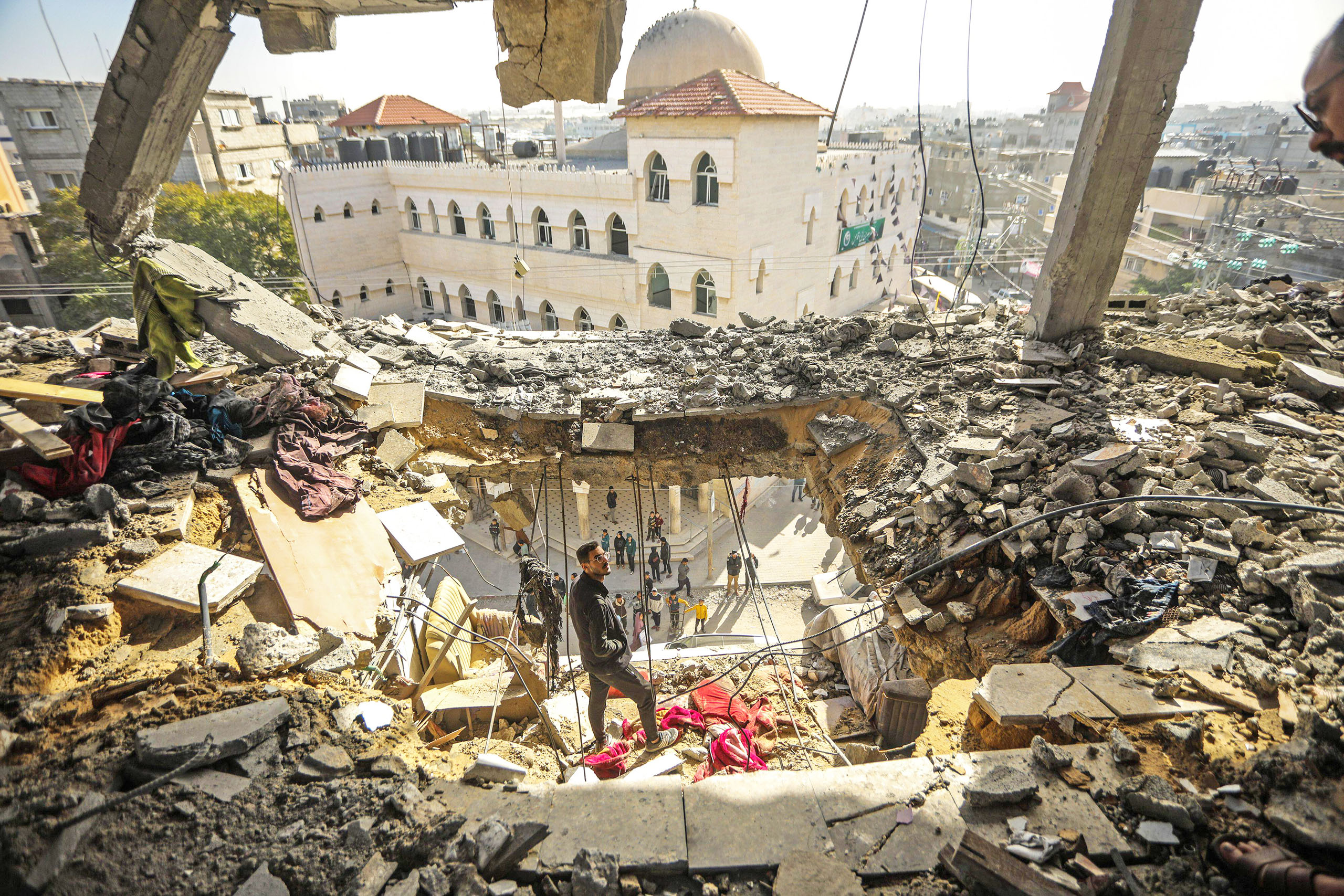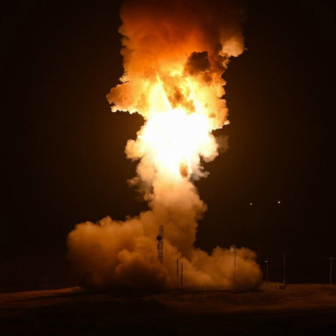History is a vast early warning system, as the American journalist Norman Cousins wrote many years ago. To better understand contemporary events in the Middle East we need go back no further than America’s catastrophic intervention in Iraq in 2003.
Among the various negative consequences of a vainglorious attempt to implant Western-style democracy on the banks of the Tigris is the empowerment of Iran as a regional force. Prior to 2003, Iran had barely recovered from a debilitating 1980–88 war with Iraq. Its efforts to spread power and influence across the region were constrained by war wounds and a weak economy. After 2003, however, Iran found itself the principal beneficiary in a Middle East power game gone badly wrong.
Overnight, it acquired an oil-rich client state, Iraq, on its western flank and a virtually unimpeded gateway for spreading Shiite influence across the region via surrogates including Hezbollah, its client in Lebanon, and an embryonic and ultimately lethal relationship with Hamas in the Gaza Strip.
Not all the fallout from the disastrous American intervention in Iraq was negative. The Arab Spring of 2010–12 raised hopes, all too briefly, that autocratic regimes like those in Syria would succumb to popular uprisings, partly driven by social media.
Over time, though, autocrats reasserted themselves. In the process, Iran’s influence continued to spread. In Syria, for instance, the Iranian Revolutionary Guard Corps bolsters Bashar al-Assad’s regime against ongoing civil conflict.
The upheavals following the Iraq war also helped to facilitate Russia’s re-engagement in the Middle East. Moscow has become a significant player across the region with relationships that extend from Syria, where a Russian intervention helped to save Assad’s regime, down into the Gulf.
Russia’s renewed influence includes what is effectively a security pact with Iran and a push to sell arms into a region already awash with armaments. Acknowledging the weakened and weakening US position in the region, Gulf states like Saudi Arabia have improved their ties with Moscow.
Sometimes overlooked is the fact that Russia, China and Iran have mutual security ties. They have conducted joint naval exercises in the Arabian Sea. China is heavily dependent on Middle East crude oil. It’s a far cry from 1972, when Egyptian president Anwar Sadat sent Soviet advisers packing and tilted his country towards the West, and America in particular. That year marked a nadir of Soviet influence in a region broadly regarded by Moscow as its sphere of interest — a nadir from which Vladimir Putin’s regime has sought to recover.
If the historian Barbara Tuchman had been alive to update her magisterial critique of American foreign policy, The March of Folly: From Troy to Vietnam, she would surely have included the Iraq invasion in her summation of misguided policies with far-reaching consequences.
This brings us to 7 October 2023, the day Hamas militants broke of a Gaza security cordon in which Israel had assumed, wrongly, they were contained. The massacre of combatant and non-combatant Israelis has had, and is having, metastasising effects across the region. In many cases, though not all, Iran is a common denominator.
This is not to say that Tehran doesn’t have legitimate security interests in a hostile Middle East environment. But its support for disparate players ranged against America’s client, Israel, is a principal cause of the current mayhem.
Without Tehran’s backing, it is doubtful Hamas would have been in a position to carry out its brazen 7 October incursion. Absent Iran’s military training, arms and diplomatic support, Hezbollah in Lebanon is unlikely to have become the force it is.
In Yemen, Iran’s nurturing of the Shiite Houthis enabled its client to withstand brutal efforts by Saudi Arabia to bomb its forces out of existence. In recent weeks, Tehran’s supply of cruise and anti-ship missiles and drones has given the Houthis the capacity to disrupt shipping in the Red Sea, through which 15 per cent of the world’s seaborne trade usually passes.
Iran’s regional power play brands itself as an “arc of resistance” aligned with its Shiite co-religionists in Lebanon, Yemen and Syria (whose heterodox Alawite rulers represent a branch of Shiism), and with Sunni fundamentalist Hamas in Gaza. This is resistance primarily to Israel, but also more broadly to efforts by the United States to assert itself in a region where its credibility has been eroded by mistakes like the Iraq war and virtually unconditional support for an Israel whose treatment of the Palestinians fuels resentment.
Long gone are the days when Henry Kissinger, US secretary of state at the time, could broker a peace agreement between Israel and Egypt. Now Kissinger’s latest successor, Antony Blinken, shuttles forlornly between Israel and Arab capitals constrained by his own weak president and the prerogatives of American domestic politics in an election year.
The Biden administration has been shown incapable of restraining Israel’s merciless attacks on Gaza, which have left more than 25,000 Gazans killed, according to the Hamas health ministry, and vast swathes of the enclave uninhabitable. American cover, direct or tacit, for Israel’s brutal tactics against Hamas has further stretched Washington’s credibility in the region.
On the other hand, support for Hamas among Arab regimes is tepid, if not hostile. This attitude has been conditioned by concerns that Hamas’s version of radical Islam, incubated in Egypt in the 1920s, will spread and thus create an internal threat for those regimes.
Self-preservation is the prime concern of the hereditary rulers of oil-rich Gulf states, but at the same time they can’t ignore the horror among their populace at what they are witnessing on their television screens. The Biden administration’s resistance to calls for a ceasefire has strained relations with traditional allies, like Jordan, the majority of whose population is of Palestinian origin.
The continuing spillover from the generations-old conflict between Israel and Palestine has also intensified a shadow war far beyond the Gaza Strip. Evidence of this can be seen, on the one hand, in Israel’s assassination of Hamas leaders in Syria and Lebanon and its elimination of a Hezbollah commander in Lebanon, and, on the other, an upsurge in attacks on American bases in the region.
Meanwhile, it is hard to see a realistic conclusion to the Israel–Palestine conflict as long as Benjamin Netanyahu is Israel’s prime minister. For virtually his entire political career Netanyahu has sought to frustrate reasonable efforts towards a resolution of the issue. At every turn, whether in office or in opposition, he has contrived to stymie a process that might lead to a reasonable compromise.
Since his earliest days in politics he has been a sponsor of Israeli settlers in the territory occupied in the 1967 war. The number of settlers has reached a point where it will be virtually impossible to unscramble the settlement egg without risk of civil conflict in Israel itself. Some 500,000 Israelis now live in the occupied West Bank and another 200,000 in Arab East Jerusalem; many are militant Zionists who believe they are occupying the biblical home of the Jews.
Netanyahu has been a godfather of this process both from the perspective of his own ideological attachment to a Greater “annexationist” Israel and out of political expediency. In his continued efforts to hold on to power and avoid possible jailing for corruption he has aligned himself with some of the most extreme elements in Israeli politics.
His reluctance to countenance a “two-state solution” if and when the guns fall silent is consistent with his opposition over many years to an accommodation with the Palestinians except when it has been politically expedient for him to show some flexibility.
He is a prime minister on borrowed time. It is highly likely, even inevitable, that once the Gaza war subsides Netanyahu will be obliged to step aside. An inquiry into events leading up to 7 October, including intelligence failures, will almost certainly hold him accountable.
None of this is to suggest the Palestinians are blameless. A weak and corrupt Palestinian Authority in Ramallah has contributed to a vacuum being filled by more radical elements. It might be an inconvenient detail, but if elections were held in the Palestinian territories today Hamas would almost certainly prevail, credited with its resort to armed struggle.
What then are the prospects for peace between Israel and the Palestinians under the two-state formula discussed over many years? This is the holy grail of Middle East peacemaking and, like the holy grail, it is likely to remain mythical.
That is unless America and its allies in Europe and the Middle East are willing to impose a formula on Israel and the Palestinians. The only way that will happen is if Washington puts Israel on notice that financial aid, military assistance and diplomatic cover will be jeopardised if it doesn’t engage in realistic steps towards formalising a Palestinian state.
Since this is highly unlikely under any reasonable political scenario, the Israel–Palestine conflict will remain an open Middle East sore with the likelihood, even the certainty, that terrible events will erupt from time to time. As we’ve seen in recent months, these events — and the ever-present risk of a much wider conflagration — will test not only America’s resolve but also that of the international community.
The risks are manifest. In an American election year, with the possible return of Donald Trump to the White House, a volatile situation in the Middle East may well become even more incendiary. While it is not in either America’s or Iran’s interest for the conflict to escalate out of control, that possibility can’t be excluded given both the circumstances and personalities involved.
We can but speculate as to America’s response to the events of 7 October if Trump had been in the White House, but it is most unlikely that he would have had a calming influence. Biden may have been ineffectual in constraining Israel, but Trump could well have made a bad situation a whole lot worse.
Then there are Iran’s nuclear ambitions. Both sides of American politics have said Iran’s acquisition of a nuclear capability would constitute a red line. In the event of his winning the presidency, would Trump resist pressure to conduct pre-emptive strikes against Iran’s facilities as it creeps ever closer to acquiring the ability to manufacture and weaponise a nuclear device?
It was Trump who abandoned the nuclear deal with Iran negotiated by Barack Obama’s administration. The single most irresponsible foreign policy decision of Trump’s administration, it undid an agreement aimed at persuading Iran that its interests would be better served by desisting from enriching weapons-grade uranium.
All this means that even when the Gaza war is over, a proxy war between Iran and the United States and its ally Israel will persist, made worse by an erosion in America’s ability to influence events or stop its principal ally from pursuing policies detrimental to Western interests more generally.
With the Middle East in turmoil, history tells us that once a thread is tugged from a regional tapestry things can unravel, and unravel fast. These are perilous times. •




